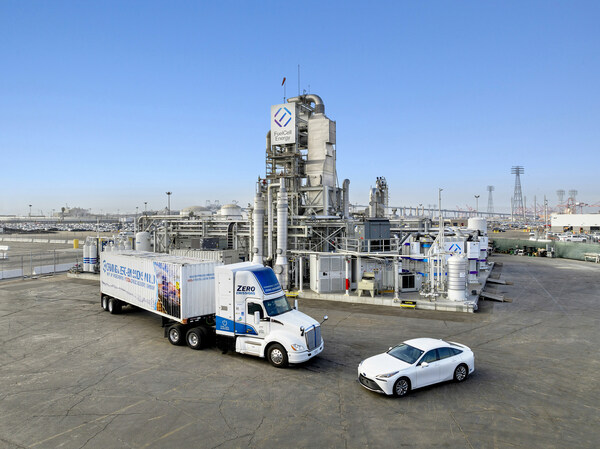World Energy GH2, the developer of a green ammonia export project in Newfoundland and Labrador, Canada, is aiming to reach FID in early 2025 on phase 1 of Project Nujio’qonik, Managing Director and CEO Sean Leet said in an interview.
Phase 1 of the project entails the construction of a 1 GW wind facility and 600 MW of electrolysis for an estimated cost of $5bn, Leet said. Once complete, the first phase of Project Nujio’qonik is expected to produce approximately 400,000 tonnes of green ammonia for export.
The developer is working with Green Giraffe and RBC Capital Markets to advance a project financing deal, the same advisors that assisted World Energy GH2 on a $95m loan from Export Development Canada, announced last week.
The debt-to-equity split for the $5bn capital raise is still being iterated as the company looks at financing options with the available government subsidies and potential support from export agencies, Leet said. The company has not yet lined up an arranger for debt financing and expects to make a decision on that role at a later date, he added.
A schedule update is in progress as part of the project’s FEED readiness assessment. This update, considering factors such as long lead item availability and offtaker delivery requirements, is a required step before the start of FEED and is expected to be released around April 15.
The FEED readiness assessment, Leet said, “is a process that we’ve undertaken with some value engineering due to some learnings from the pre-FEED deliverables and some other aspects of just making sure we’re well prepared for FEED so we can execute flawlessly on that.”
Leet expects the FEED process will take between nine and 12 months, setting the developer up for an FID in early 2025. As part of a competitive bidding process, World Energy GH2 was awarded four different Crown land sites, each capable of producing 1 GW of wind power, allowing for additional phases up to 4 GW of renewables.
Newfoundland, the distant Canadian island where Project Nujio’qonik is located, has become a hotbed of green ammonia project activity due to its exceptional wind resource, with as many eight major projects springing up (see, and zoom, on map).
Investment outlook
The Canadian government has promulgated a clean hydrogen investment tax credit of up to 40% on certain expenses, available until 2035. And in its most recent budget, the government floated the idea of providing contracts for difference to help de-risk emission-reducing projects.
Leet believes that the CfD arrangement, which will be administered by the Canada Growth Fund, will be tied to the Canada-Germany Hydrogen Alliance, an agreement that promotes clean hydrogen trade ties between the two nations. Canadian Prime Minister Justin Trudeau and German Chancellor Olaf Scholz signed the accord at World Energy GH2’s site in Stephenville, with the aim of shipping hydrogen or ammonia by 2025 – a timeline that looks increasingly stretched. And World Energy GH2 earlier this year became the first North American member of Germany’s Port of Wilhelmshaven's energy hub.
“Those details haven’t been announced yet but we’re hopeful that the CfD mechanism is there to work alongside the ITC,” Leet said.
Additional financing could come from more export credit agencies “in the countries you would expect” that would support local companies providing equipment to Project Nujio’qonik. “That will be a very likely piece of our financing arrangement.”
World Energy GH2 is in discussions with various offtakers, but will be able to engage in greater detail once the ITC and CfD subsidies are clarified, and once the project receives its environmental permit, Leets said.
World Energy GH2 was set up as a standalone Canadian company with the sole purpose of executing on Project Nujio’qonik. It is owned by its founders along with SK ecoplant, the environment and energy arm of Korea’s SK Group, which took a 20% stake in the company – and also the project – for $50m.
Gene Gebolys, the founder and CEO of World Energy LLC, a provider of low-carbon fuels, is also a founder of Project Nujio’qonik. And John Risley, another partner of the Canadian project, is a co-owner of World Energy LLC.
Support from existing investors along with the Export Development Canada facility announced last week make the project entity well capitalized to move “expeditiously” through FEED to FID, Leet said.
Canada to Europe
World Energy GH2 is talking to the major ammonia players about a scale-up of import capacity on European shores.
Leet noted specifically that the Antwerp-Bruges port has plans to scale up to handle the increased amounts of ammonia imports, for use in the various industries located in Belgium and potentially on to Germany from there.
Three companies – Fluxys, Advario Stolthaven Antwerp, and Advario Gas Terminal – have said they are considering constructing an open-access ammonia import terminal at the port of Antwerp-Bruges. Air Liquide also said it will build an ammonia cracking facility there.
The Port of Wilhelmshaven, Germany, where World Energy GH2 is a member of the energy hub, has similar plans to scale up, with various companies evaluating ammonia import terminals and cracking facilities.
Meanwhile, Leet said the ammonia product that it ships to Europe, in addition to benefiting from Canadian subsidies and tax credits, will also comply with the EU’s RFNBO standards.
The project has existing grid and water connections already at the Port of Stephenville, since the hydrogen plant will be built on top of a former paper mill which consumed both water and electricity.
“So we're fortunate to have that grid connection available to us and the power in the Newfoundland grid is well over 90% existing hydro,” Leet said. “So between that and our wind power, we will have no issue meeting the standard set by the EU for green hydrogen and it will be 100% RFNBO compliant.”
The company is working on regulatory certification with multiple bodies but has not finalized a provider.







